- Home
- Harlan Ellison
Children of the Streets
Children of the Streets Read online
Children of the Streets
Harlan Ellison
Dedication
This one is for my agent.
It is also for my friend.
THERON W. RAINES
Gratitude is expressed by the author to the following:
Mr Walter Fultz, my first editor, whose encouragement and aid first enabled the author to embark on the ten weeks needed for researching these stories; and whose enthusiasm for the project removed it from the area of speculation and transmuted it into a publishable body of work, now completed.
Mr Donald Wollheim; Mr Robert Silverberg; Mr Hal Ellson (who is often thought to be a pseudonym for the author, and vice versa); Mr W.W. Scott; three police officers of the New York Police Department who must remain anonymous; and fifty assorted boys and girls of Red Hook, Brooklyn, who unwittingly provided the source material for these stories. To all of these I extend thanks that words are insufficient to express.
Contents
BEGIN EXCERPT
TEN WEEKS IN HELL
NO WAY OUT
MATINEE IDYLL
NO GAME FOR CHILDREN
THE ROUGH BOYS
A TIGER AT NIGHTFALL
SCHOOL FOR KILLERS
MEMORY OF A MUTED TRUMPET
STAND STILL AND DIE!
GANG GIRL
BEGIN EXCERPT
2004: Looking Down the Street a new introduction to Children of the Streets by Harlan Ellison®
This book was first published when I was twenty-seven years old. As I write this new introduction, I am one month away from my seventieth birthday. What the world was like, when I wrote these stories, is as lost and arcane as the prime time of the Ottoman Empire. No self-respecting vato loco or gangbanger would even consider using a zip gun (if, in fact, he had ever heard of such an implement); give him an Uzi or an AK-47. Or, even better, an Austrian 9mm Steyr MPi 81 with a 25- or 32-shot detachable box. Switchblade? Fuggedaboutit.
The book was originally titled Children of the Streets, but the paperback publisher felt something, well, ‘juicier’ or ‘more sexy’ was necessary in those days of lurid news-stand covers. He retitled it The Juvies, the term for juvenile delinquents that was in every tabloid headline. I only hated the new identity. And, oddly, this book became the only one of my seventy-five never to be reprinted. Until now. And now, of course, is a new world in which these stories are artefacts of a lost culture, a time as buried in the sands of memory as daily life of the Incas at Machu Picchu.
Yet I have rather a warm spot in my heart for this little collection. ‘No Game for Children’, for instance, was the first story I wrote while in the US Army. During basic training, no less. I was drafted in 1957, between World War II.3 and World War II.4, and I made the error of punching out a racist 2nd lieutenant in the reception center at Fort Dix, New Jersey. Laid the momser out with one good right hook, and they were going to court-martial me on the spot, but since I was not actually in the army, the worst they could do was to ship my young carcass off to Ranger basic training at Fort Benning, Georgia. Standard basic training in those days was eight weeks. For the Rangers, one did ten weeks. One day I may write about all that. It’s only been forty-eight years. I’m sure I’ll get over the trauma of those two years in the military any decade now.
But the connection to my affection for this book, via my stint among the weapons-bearers, is that I didn’t have the time to write that I’d enjoyed prior to my induction. I could only write late at night, after twenty-five-mile forced marches with full pack and M-1 at port arms. Or on weekends. So I ceased writing quick fiction for a buck, and I wrote what I’d really wanted to write, stories worthy of the talent I knew was in me somewhere.
And out of that limiting situation came the ‘Rough Boys’, ‘No Game for Children’, ‘Memory of a Muted Trumpet’ and quite a few others that critics have said were my best early works. At least five of those appear here, rediscovered after more than four decades.
What a strange, long trip it has been! The world of New York, Brooklyn and west-coast street gangs read as if they were cautionary tales by Louisa May Alcott or Horatio Alger. The universe in which we now move is far more deadly, far more random, infinitely less (what a peculiar word) ethical or strictured with unspoken rules.
Gangbangers today, particularly here in Los Angeles, will kill anything that moves if it’s in the path of a drive-by hit. They don’t give a shit if it’s a three-year-old baby or a gray-haired old woman in support hose. They use weaponry intended for insurrections and militias, and the venal scum who manufacture those weapons get fatter and more blood-engorged by the day. It is a madhouse out there.
When I wrote these stories, it seemed the youth of our nation were at the crossroads. They were, I thought, foolishly perilous times. Little did I know.
I don’t want to sound too impoverished of spirit, too sad and cynical, but it does sober one up to realize that no matter how bad or mean the crossroads look, there are always streets to be taken that are darker and more damnable than even the most tenebrous of us can imagine.
Here’s hoping that in another forty-something years, when Children of the Streets is reprinted, that whoever writes the 2044 introduction (it sure as li’l green apples won’t be me), s/he will be able to say: ‘Ellison should’ve lived long enough to see how swell everything became.’
Yeah. That’s a good thought with which to leave you. Enjoy the book, howzabout?
Harlan Ellison April 2004
END EXCERPT
The following is an account of ten weeks I spent as a member of a gang of juvenile delinquents in New York City. It is true. Sections of it have been telescoped to facilitate continuity of reading. It was first published as an article titled (rather melodramatically, I thought) ‘I Ran With A Kid Gang!’ But the message it conveyed then, five years ago, is truer today than it was then.
Since that time I have had published a novel on this subject and a book of short stories similar to this one…and still the kids go out hunting. Still the boys carry the Italian stilettos in their boot-tops. Still the chicks get themselves balled in back alleys and think their stud with his duck’s-backside hairdo is only slightly greater than Samson. Don’t things ever change?
Are we going to hell in a Dixie Cup?
I’ve seen these kids in South Philly, on San Francisco’s Embarcadero, in Louisville and Cleveland…and in the small towns too. They all think alike, though the trappings may be different. Highbrow, lowbrow, rich or poor; black or white, American-born or with the sweet silky lisp of the Spanish, they all hate. That’s the lowest common denominator. Hatred.
The following are portraits of hate, haters and the hated. They are not soft, pastel watercolors, done to bring a tear and a sigh. They are done in sharp black and white (and very often in blood red), and they are painted as they appear. Stark and stinking, and intended to scare the hell out of you.
Which may in turn scare you into helping to get these kids out of hell.
TEN WEEKS IN HELL
When he’s down, kick for the head and groin.
Never make it on the scene unless you’re shanked and the blade’s got six inches on a quick switch.
Avoid cops. Play it cool.
There aren’t many rules in the primer for gang kids, but they all count. They’re all easily understood because they use a simple and sound philosophy: it’s a stinking life, so get your kicks while you can; the gang is home, take what you want, tell them nothing—and don’t get caught.
And today, in the five boroughs of New York City, and all across America, wherever the hell of cities forces kids into the streets, young hoods are applying these rules.
They call themselves ‘juvies’—short for juvenile delinqu
ents—and they revel in the notoriety they receive in newspapers and exposés. They try to outdo themselves, and each other, laughing at law and order and decency in the process.
I associated with two kid gangs in New York, attempting to get facts social workers could not obtain. I ran with those kid gangs, and did what they did, saw what they did, became sick at what they did.
Get it straight right now: these aren’t kids playing games of war. They mean business. They are junior-grade killers and public enemies numbers one through five thousand.
By now the kid gangs are aware of the potential dangers of the social worker and the honest reformer, and they no longer trust them fully. The only person who could get into a gang and see just what today’s youths are doing would have to be someone they could trust.
So I joined a kid gang.
My only attributes of trustworthiness, from the young tough’s viewpoint, were that I looked like a seventeen-year-old, I knew how to handle a knife and a zip gun, and I had ideas they could use.
The Barons, whose home turf is near Prospect Park in Brooklyn, and the Kicks, who carry on their illegal activities in Queens, Long Island City and Astoria, show basic similarities of organization and direction. Their thinking is much alike; their morals and language, their dress and weapons, the same.
I’ll tell you about the Barons. They are breaking up, and chances of them finding the author of this—who they knew by another name—are less than the Kicks, who are still rolling strong, and who have but recently organized a subsidiary club affectionately called the Jolly Stompers.
At the outset, I must make it clear that I engaged in activities which are outside the law. That was a necessity. But I will also assure the reader that the author is guilty of no crimes of any great stature. The kid gangster is a small-peanuts operator to begin with, and it is only the advanced, and sometimes warped, juvie that gets into the newspapers.
In the main, the kid gangster is a rat nibbling at the fringes of the candy box. For a time, I was such a rat.
The stud pays first homage to the gang, or club. He attends all meetings, he never rats on a pal, he never crosses a member unless the circumstances are inevitable; he is ruthless when those inevitable circumstances arise.
A recent gang rumble between the Barons and the Puerto Rican Flyers demonstrated just how ruthless today’s young toughs can be…
I had been in the club for two weeks. My introduction to the Barons had been in a malt shop called Nicky’s on the one main street of the Barons’ territory. From people in the neighborhood, I had gathered this was the place to go if you wanted trouble.
Residents in that neighborhood stayed away from the place. It was run by an old man who had hired a teenager, who in turn had brought in all his friends. They hung out there and in a short time it had become a meeting place for the juvies and their women.
There is no point detailing the kind and degree of terror that washed me as I made my initial appearance at Nicky’s. I felt very much like Daniel about to test the sharpness of a den full of lions’ teeth. In the lions’ heads.
My first meeting with one of the gang regulars was as auspicious as I’d hoped. In making a path to the telephone, one of the girls sprawled smoking at a table gave me a fourteen carat come-on.
‘I stopped picking green apples like you when I was thirteen, sister,’ I said, smiled, and went on back to the telephone.
I didn’t know it, but I had just taken my head in my hands. You just don’t sass a gang girl. I had, and it struck a funny bone somewhere in the crowd, because the joint rocked and when I came out of the booth one of the boys was remarking, ‘That’s the first one in weeks to shut off your water, Floss.’
Somehow I knew this was a good time to make my pitch.
I kept smiling and told them I’d buy Cokes for the crowd. The ‘set ’em up for the crowd’ routine is so old it’s got crutches, but it works. It worked then.
In a short time I knew half a dozen of the young rocks who were there with their girls. All of them were tagged with nicknames—Grease, Fish, Poop, Trump, Ice, Samson, Cherry—and all of them had a sort of pathetic eagerness to meet someone new, once they were sure he wasn’t a threat.
I kept coming in, three, four times a week, till I knew almost as much about the Barons as a real member. Finally I was asked if I wanted to join, and I told them I’d let them know in a day or two.
There were two good reasons for that. I didn’t want them to think I was anxious, and I had to think it over real hard. You don’t go outside the law willingly, unless you know you can get back.
I wasn’t too sure I could.
Finally I told them I wanted in, and I was taken to the clubhouse in a cellar beneath an athletic club.
My initiation was something I’d rather forget.
A few scars will make that impossible, though.
After two weeks, I was a full-fledged Baron, with all the rights and privileges therefrom derived. I had the right to attend all Baron functions and blasts. I had the right to wear a Baron jacket at official affairs. I had the right to call myself a Baron and pull jobs in Baron turf.
I had the right to get myself slashed or blown open in a rumble.
I was in.
Then along came the big rumble with the Flyers.
The war councilors of both gangs, middlemen and arbiters of sorts, met in neutral turf to discuss terms.
The rumble noises were spreading all through lower Brooklyn, the result of a fight over a girl at a YMCA dance some weeks before.
A Flyer had found out about the dance in Baron territory, assembled his forces—typical gang psychology demands the hoods travel in groups of not less than six; the old ‘might is right’ and ‘superiority in numbers’ jazz—and crashed late in the evening.
One of the off-limits studs took over a Baron girl while her date was off tanking up on sneaky pete.
The other Baron girls, sometimes called the auxiliaries, the Rockettes, the chicks, the debs, or usually just the broads, made a short line to the Baron, and gave him the word.
When he got back, the Flyer was dancing with his woman, and a stand was called.
A ‘stand’ is when single combat becomes necessary.
All the Barons and Flyers filed out quietly to the parking lot as their two men went at it. The stand wasn’t pretty to watch, but everything at least looked fine till the Baron pulled a zip gun and put a .22 bullet through the Flyer’s chest.
Then the hell that only kids on the loose can know, broke. In a matter of seconds, the entire parking lot was crowded with fighting, swearing, bloodthirsty gang warfare.
In case you’ve been lucky enough never to be near one, let me brief you: gang rumbles aren’t pretty.
The common weapons are switchblade knives, clubs, broken bottles, blackjacks, brass knuckles and lead pipes.
But American inventiveness has been taken in hand by the gang kid too. His weapons now have a charm all their own. Like the raw potato studded with half a dozen double-edged razor-blades. Or the snapped-off car radio antenna mounted on a block of wood, rubber hand driving a lethal .22 bullet—the ‘zip’ gun. Or the sheath knife, carried behind the neck in an oiled case, honed to razor-sharpness. Or the lit cigarette in the eye.
But more than that, gang warfare is typified by a callous disregard for the Marquis of Queensbury’s rules, or, for that matter, rules of simple decency.
A cat down is a cat that can’t bother you, man! Stomp him! Stomp him good! Wear army boots, kick him in the throat, in the face, kick him where he lives! Smash him from behind with a brick! Flat edge of the hand in the Adam’s apple! Drive your hand down hard on the bridge of his nose! Smash the nose and send bone splinters into his brain!
And after it’s over, slip your switch or zip to your deb, to be shoved in her bra or garterbelt or pants-top; cops don’t frisk the chicks, they get away clean. Or if you play it cool, use the potato-and-blades routine and then heave the weapon down the nearest sewer, and no loss.<
br />
There’s a grocery store on every block.
The police broke up that rumble before it really got going: no one was killed. A few went to the hospital in bad shape, but it was a dull play—no one was killed.
Next day, the Flyers got their revenge.
Ten of them invaded the high-school room where the offending Baron sat, trying to avoid being taught. They caught him from behind, leaned on him good and proper, and sent him to the emergency ward to have four broken ribs set.
The Barons sent out the word.
The word was retaliation.
Next night, a lone Flyer, walking to the corner, was jumped from a slow-moving car by a gang of Barons, and thrown through the front window of a nearby bar.
So the war councilors got together.
Where was it going to take place? What time? What kind of weapons? Would the debs be used? How was the cop situation in that neighborhood?
A methodical procedure that would have done credit to a Disraeli. The rules were set, the lines were out, the studs were sharpening their knives. This was to be the big rumble.
I was warned not to wear a Barons jacket. The Barons, as with most kid gangs these days, made sure they got rid of their nameplate jackets weeks before the war. A nice shiny satin jacket with BARONS written big across the back is a signpost a cop can spot a block off. It’s easier to keep a gang going if the cops don’t know you exist, then to ballyhoo it across the front page of the Daily News. So the jackets faded from the scene.
Then one night a week before the big rumble, I was asked if I wanted in on the big play. More guns were needed. The zips weren’t wide-ranged enough, though they caused more damage when they hit (yeah, like a dumdum!). A job would have to be pulled.
With thirty bucks any kid these days can own a piece. But there weren’t enough thirty-buck Barons around. Money was tight, and so the middleman would have to be eliminated. We were going to get the guns without worrying about the slimy little pawnbrokers.

 Repent, Harlequin! Said the Ticktockman
Repent, Harlequin! Said the Ticktockman Broken Glass
Broken Glass Other Glass Teat
Other Glass Teat Memos From Purgatory
Memos From Purgatory I Have No Mouth and I Must Scream
I Have No Mouth and I Must Scream The Deadly Streets
The Deadly Streets The Glass Teat
The Glass Teat Paingod and Other Delusions
Paingod and Other Delusions No Doors No Windows
No Doors No Windows Strange Wine
Strange Wine Harlan Ellison's Watching
Harlan Ellison's Watching Over the Edge/An Edge in My Voice
Over the Edge/An Edge in My Voice Troublemakers: Stories by Harlan Ellison
Troublemakers: Stories by Harlan Ellison Gentleman Junkie and Other Stories of the Hung-Up Generation
Gentleman Junkie and Other Stories of the Hung-Up Generation The Kyben Stories
The Kyben Stories From the Land of Fear
From the Land of Fear The Top of the Volcano: The Award-Winning Stories of Harlan Ellison
The Top of the Volcano: The Award-Winning Stories of Harlan Ellison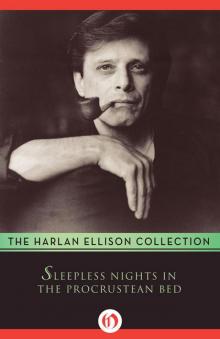 Sleepless Nights in the Procrustean Bed
Sleepless Nights in the Procrustean Bed Ellison Wonderland
Ellison Wonderland Children of the Streets
Children of the Streets Can & Can'tankerous
Can & Can'tankerous Love Ain't Nothing but Sex Misspelled
Love Ain't Nothing but Sex Misspelled Stalking the Nightmare
Stalking the Nightmare Approaching Oblivion
Approaching Oblivion Deathbird Stories
Deathbird Stories Partners in Wonder
Partners in Wonder Web of the City
Web of the City Spider Kiss
Spider Kiss A Boy and His Dog
A Boy and His Dog Shatterday
Shatterday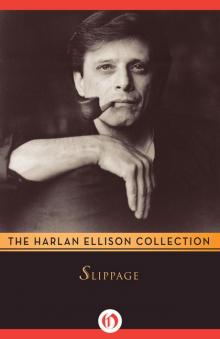 Slippage: Previously Uncollected, Precariously Poised Stories
Slippage: Previously Uncollected, Precariously Poised Stories Repent, Harlequin! Said the Ticktockman
Repent, Harlequin! Said the Ticktockman Come to Me Not in Winter's White
Come to Me Not in Winter's White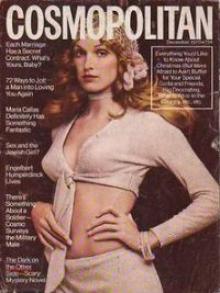 The Song the Zombie Sang
The Song the Zombie Sang The Other Glass Teat
The Other Glass Teat Doomsman - the Theif of Thoth
Doomsman - the Theif of Thoth The City on the Edge of Forever
The City on the Edge of Forever I See a Man Sitting on a Chair, and the Chair Is Biting His Leg
I See a Man Sitting on a Chair, and the Chair Is Biting His Leg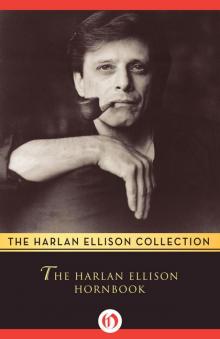 The Harlan Ellison Hornbook
The Harlan Ellison Hornbook Pulling A Train
Pulling A Train The Glass Teat - essays of opinion on the subject of television
The Glass Teat - essays of opinion on the subject of television An Edge in My Voice
An Edge in My Voice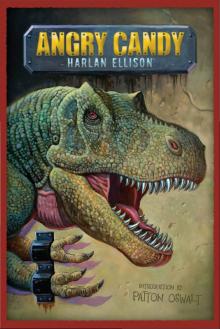 Angry Candy
Angry Candy Troublemakers
Troublemakers The Top of the Volcano
The Top of the Volcano Over the Edge
Over the Edge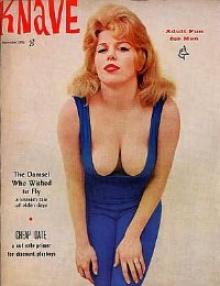 Survivor #1
Survivor #1 Slippage
Slippage